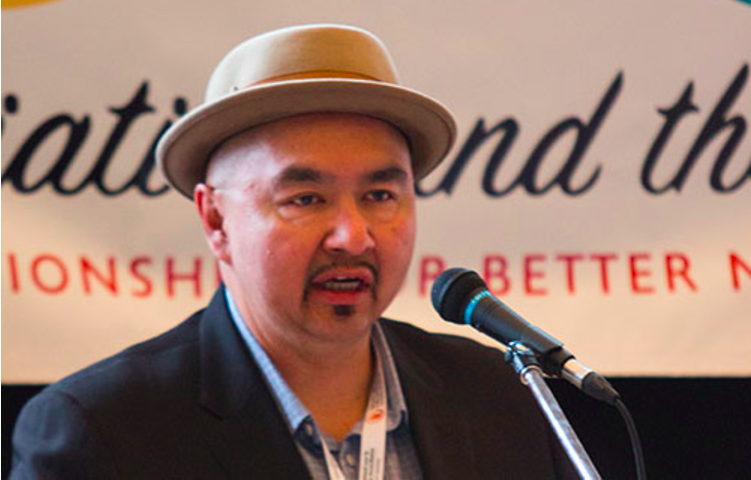“Give them an opportunity. Give them a chance to develop. Just keep investing in Indigenous people.”
By Brenna Engel for University of Regina’s Ink Online
“Give them an opportunity. Give them a chance to develop. Just keep investing in Indigenous people.” That is the message Mervin Brass wants to get across through the Reconciliation and the Media conference in Saskatoon on Oct. 4 and 5.
Brass is the publisher of Treaty 4 News, an online news site that reports Indigenous news across most of southern Saskatchewan, western Manitoba and southeastern Alberta.
Brass had been a reporter for CBC Regina and a reporter and host on Rawlco Radio Saskatoon. However, he faced many adversities in his years of reporting, many stemming from his Indigenous origins.
“I never allowed my Indigenous identity and culture to hold me back from things,” he said. “I did a story for (a former employer) and they wanted to introduce me as a First Nation reporter from Saskatchewan, or an Aboriginal reporter…they didn’t know what to call me- that’s why we’re doing this event, Reconciliation and the Media, because it’s not that they were trying to do something wrong, they just didn’t have an understanding. They weren’t educated.”
Reconciliation and the Media was developed to change news coverage of Indigenous issues. This can be achieved if the media reports with greater sensitivity towards Indigenous people, if people take seriously the impact of residential schools on the Indigenous peoples, and if the goal of together Indigenous and non-Indigenous media is met.
Brass played an integral role in helping bring journalists together for the conference, with his extensive experience working in mainstream newsrooms. He has seen how time and time again Indigenous news gets left behind, and only when a story is about something negative or sensationalized will the media report on it.
Merelda Fiddler, a former employee of CBC Regina, recounted her first time working with Brass when she was an intern. “When I was first in the business I really didn’t know who I was or how it would fit into what I was doing,” she said. “It was Mervin who showed me how I would fit in and that just because you’re Aboriginal doesn’t mean that that’s your only thing.”
Fiddler said Brass is an inspiration for her, because he is not afraid to say what he thinks or try something new. He was the first Indigenous person she had ever met in a newsroom, and they continued to work together for years.
Brass is passionate about journalism and about getting the people of Treaty 4’s voices heard. “Positive changes can be learning how to build a relationship with Indigenous communities, with Indigenous leaders and academics, hiring more Indigenous reporters, getting newsrooms trained on Indigenous history, retaining these new reporters and developing them as leaders in the newsroom,” he said.
If the media makes an effort to become more educated on Indigenous matters, as Brass suggests, a change can be made. If Indigenous peoples aren’t always portrayed in a negative light then that can begin to break the many negative stereotypes about them. That is the mission of the Reconciliation and the Media conference and leaders like Mervin Brass.

